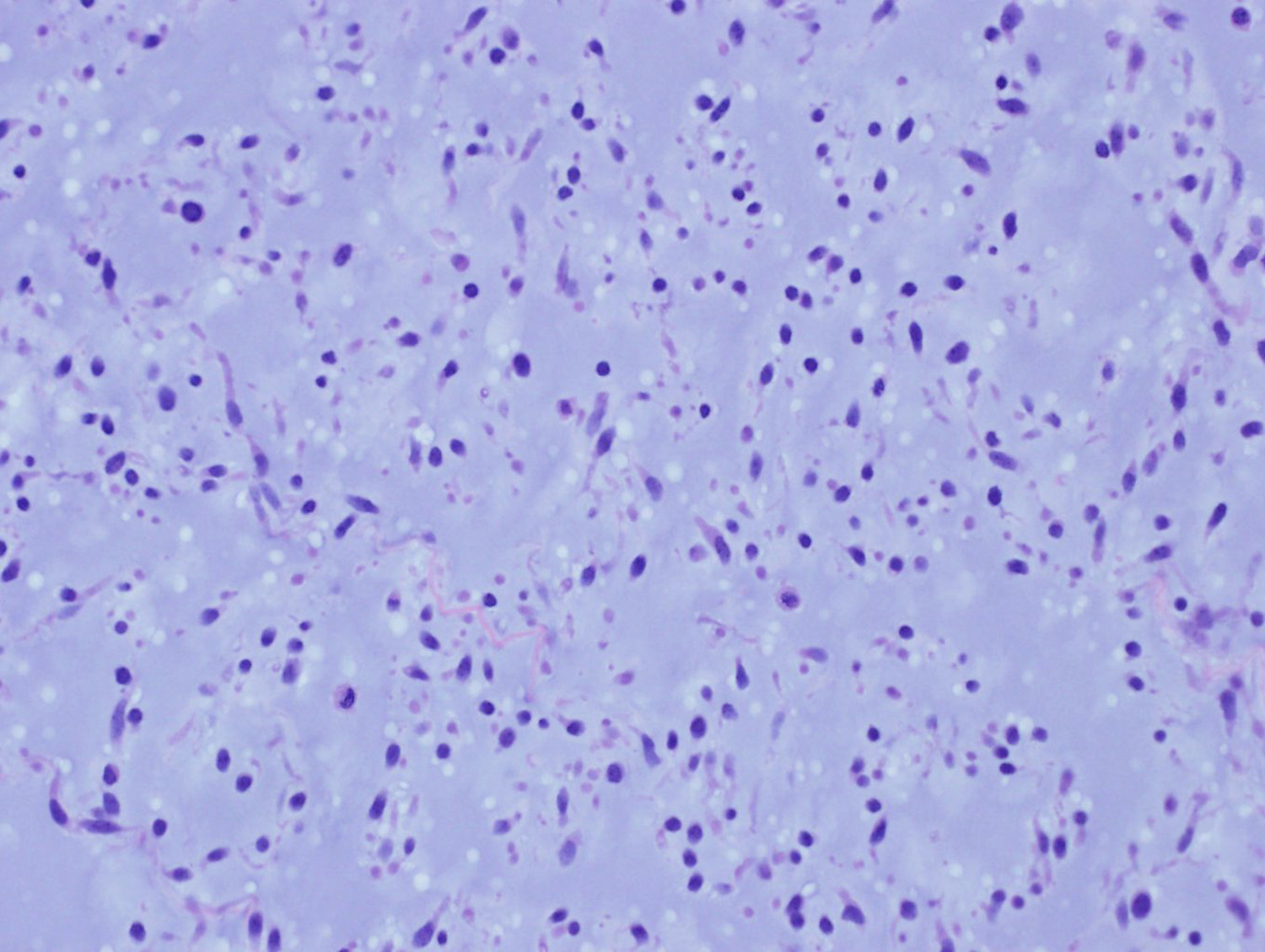 A biopsy from a large thigh mass from a 50-year-old man is depicted. What is the most likely cytogenetic abnormality in this tumor?
A biopsy from a large thigh mass from a 50-year-old man is depicted. What is the most likely cytogenetic abnormality in this tumor?
What's the underlying condition?
- t(11;22)
- t(9;22)
- t(12;16)
- t(7;16)
Answer
| The answer is “B”, t(9;22) This is an example of extraskeletal myxoid chondrosarcoma. It usually occurs in adults, mostly arises in the deep soft tissues of the proximal extremities. On histologic sections, the tumor typically has a multinodular architecture, with abundant myxoid or chondromyxoid matrix. The tumor cells form cords, and small clusters, with minimal cytologic atypia. The lesional cells may be positive for S-100 protein and C-Kit in a small subset of tumors. Most of these tumors demonstrate t(9;22)(q22;q12) or less frequently t(9;17)(q22;q11) resulting gene fusions of NR4A3-EWSR1 or NR4A3-TAF15. Choices A, C and D are characteristically seen in Ewing Sarcoma, myxoid liposarcoma and low grade fibromyxoid sarcoma, respectively. References 1. Stenman G, Andersson H, Mandahl N, Meis-Kindblom JM, Kindblom LG. Translocation t(9;22)(q22;q12) is a primary cytogenetic abnormality in extraskeletal myxoid chondrosarcoma. Int J Cancer. 1995 Aug 9;62(4):398-402. 2. Attwooll C, Tariq M, Harris M, Coyne JD, Telford N, Varley JM. Identification of a novel fusion gene involving hTAFII68 and CHN from a t(9;17)(q22;q11.2) translocation in an extraskeletal myxoid chondrosarcoma. Oncogene. 1999; 18:7599-7601. |
Contributed by Shi Wei, M.D.